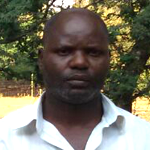Treatment for Parkinson's Disease, Chronic Pain, Tremor and Dystonia- Deep Brain Stimulation (DBS) at Best Neurosurgery Centers in India
Super Speciality Hospital with dedicated Neurosurgery and Neurology ICUs and centres of Specialisation for brain tumours, spinal disorders, stroke, epilepsy, movement disorders and headache
Experienced Team of professionals having a specialist Neurologist (Movement Disorder specialist), Specialist Neurosurgeon, Neuroradiologist, Physiotherapist and Dietary specialists who provide high-quality care
Most Advanced Technology like Brain Suite, Biplane Neuroendovascular Angiography, Synergy S Linac System, S-7 Navigation System, Endoscopic Neurosurgery Theatre, 3 Tesla MRI, 256 slice CT scan, PET scan
Low Cost Treatment package which includes Airport Pick up and Drop from Airport in India, Hospital Stay, Testing/Screening, Deep Brain Stimulation Treatment, Consultations with Specialist Doctors , Nursing care, Surgeon Fee, Medicines and Consumables.
What is Deep Brain Stimulation (DBS)
Deep Brain Stimulation is a surgical treatment involving the implantation of a medical device called a brain pacemaker, which sends electrical impulses to specific parts of the brain. DBS in select brain regions has provided remarkable therapeutic benefits for otherwise treatment-resistant movement and affective disorders such as Chronic pain, Parkinson's disease, Tremor and Dystonia.
After thorough examination, Doctors first will determine if the patient is a candidate for Deep Brain Stimulation Treatment. If the patient is found to be a right candidate then the doctor will review with you possible results before surgery. In this procedure, the surgeon implants a thin wire lead with four contacts (electrodes) at the tips into a specific area of your brain.
These electrodes are connected by wires to a type of pacemaker device (called an impulse generator, or IPG) implanted under the skin of the chest, below the collarbone. Once activated, the device sends continuous electrical pulses to the target areas in the brain, blocking the impulses that cause tremors ( involuntary movements and can affect the hands, arms, eyes, face, head, vocal cords, trunk, and legs). You control the generator, and you can turn it on or off when you swipe a special magnet over it.
To implant the electrodes, the neuro team fits the patient with a special head frame to keep the head still during the procedure (stereotactic head frame). Then, they use magnetic resonance imaging (MRI) to map your brain and identify the area in the brain where they'll place the electrodes. They anesthetize your scalp before the procedure. During surgery, you'll remain awake to report any side effects and talk to doctors while they place the electrodes. Your responses help your surgeon place the lead in the correct place while minimizing side effects. During surgery, your doctor carefully monitors your brain to help ensure correct electrode placement.
After the electrodes are implanted, you'll receive general anesthesia so that you're unconscious when your surgeon implants the generator in your chest and guides the wire lead from your brain to the generator.
After your surgery, doctors will perform an MRI to confirm correct placement of your device and leads. You may return to your normal activities after several days. The battery life of your generator varies with usage and settings. The battery should last about five years, if it's used 16 hours a day. When the battery needs to be replaced, your surgeon will replace the generator during an outpatient procedure.
Who can opt for this treatment
Deep brain stimulation is most commonly used to treat the symptoms of these common neurological conditions:
Parkinson’s disease Deep brain stimulation was approved by the Food and Drug Administration (FDA) to treat Parkinson’s disease in 2002 and is now a standard treatment for this condition. Over time, the symptoms associated with Parkinson’s, which include stiffness, slowness, and tremor, become resistant to the medication. The symptoms will fluctuate as the medications provide relief for only a few hours at a time. For these patients, deep brain stimulation can offer steady symptom control for 24 hours per day, to provide better quality of life.
Essential Tremor When patients have inadequate response to medication, deep brain stimulation is an option to effectively treat essential tremor. Research shows that medications often only elicits a response in about half of patients with essential tremor. However, patients who undergo deep brain stimulation can experience approximately 80 percent improvement in hand tremor.
Dystonia Dystonia is a condition in which patients experience involuntary muscle contractions that force parts of the body into abnormal postures. DBS has been FDA approved for this condition under what is known as the Humanitarian Device Exemption (HDE.) This means that DBS surgery can be done on those with debilitating dystonia that does not respond well to medication, and in whom dystonia is the only neurological condition.
Obsessive Compulsive Disorder (OCD) Deep brain stimulation has been approved by the FDA under the Humanitarian Device Exemption (HDE) for the treatment of obsessive compulsive disorder (OCD.)
Benefits of Deep Brain Stimulation Surgery
Neurosurgical placement of DBS is followed by programming of the device by highly skilled physician programming experts so patients get the maximum benefit from DBS. Even a well-placed lead, if not properly programmed, will fail to provide significant benefit. Three main parameters must be carefully programmed in DBS:
- Length of the electrical pulse
- Amplitude or voltage of the pulse
- Frequency (hertz) at which the pulse is delivered
An expert in neuromodulation programming will adjust each of the above parameters to the specific anatomic and symptom profile of each patient in order to optimize their functional status and minimize side effects.
Often, once ideal programming of the DBS has been achieved, patients are able to reduce their medications, lessening the unpleasant side-effects that can come with high doses of Parkinson’s disease medication. Patients often notice lasting symptom relief soon after surgery and programming of their device.
Post Query
Refer a Patient
Request a Call Back




